*NURSING > QUESTIONS & ANSWERS > NREMT Practice Questions with 100% Accurate answers. Latest version. Graded A+ (All)
NREMT Practice Questions with 100% Accurate answers. Latest version. Graded A+
Document Content and Description Below
You arrive to find a 48 year old male complaining that his chest feels heavy. The patient is awake and talking to you. During your assessment, you note that his skin is pale, cool, and clammy. Your fi... rst step is to: A. apply your AED B. administer supplemental oxygen C. obtain a past medical history D. assist the patient in taking his neighbor's nitroglycerin - ✔✔B (Your first step is to administer supplemental oxygen. When treating chest pain, it is important to get oxygen to the patient as soon as possible to help alleviate damage to the heart muscle.) Which of the following is the correct flow of blood through the heart and lungs? A. inferior/superior vena cavae, lungs, right atrium, right ventricle, left venntricle, aorta B. inferior/superior vena cavae, left atrium, left ventricle, lungs, right atrium, left ventricle, aorta C. inferior/superior vena cavae, lings, aorta, left atrium, left ventricle, right atrium, left ventricle D. inferior/superior vena cavae, right atrium, right ventricle, lungs, left ventricle, aorta - ✔✔D The mitral or bicuspid valve, A. prevents blood from back flowing into the left atrium B. prevents blood from back flowing into the right atrium C. prevents the blood from back flowing into the lungs D. is located between the left atrium and the right ventricle - ✔✔A (The mitral or bicuspid valve is located between the left atrium and the left atrium and the left ventricle. It prevents the blood from back flowing into the left atrium.) Which of the following is NOT true of the treatment of an impaled object? A. remove if blocking the airway B. stabilize in place C. remove to accommodate transport of the patient D. control the bleeding - ✔✔C (The treatment of a patient with an impaled object includes: securing the object in place, exposing the wound area, controlling bleeding, and using a bulky dressing to help stabilize the object. The only time it is permissible to remove an impaled object is if it is impeding the breathing of a patient.) The electrical impulse generated in the right atrium is called the: A. atrioventricular node B. purkinje fibers C. sinoatriual node D. bundle of his - ✔✔C You are treating a patient that has been involved in a motor vehicle accident. You can lift a flap of skin on the patient's head. This type of injury would e referred to as a(n): A. avulsion B. laceration C. evisceration D. puncture - ✔✔A (A puncture is created by an object that is typically sharp and pointed. A laceration is defined as a jagged cut. An evisceration is typically referred to as organs protruding.) Ligaments connect: A. muscle to bone B. bones to tendon C. bone to bone D. muscle to tendons - ✔✔C Which of the following heat emergencies is considered a true emergency? A. heat cramps B. heat exhaustion C. heat infarction D. heat stroke - ✔✔D (Heat strokes are considered a true life threatening emergency. A heat stroke typically occurs after a patient as experienced heat cramps and heat exhaustion.) You are treating a patient who has overdosed on a narcotic. The greatest risk for this patient is: A. respiratory depression B. seizures C. hypertension D. hyperactivity - ✔✔A Which of the following is NOT an imminent sign that birthing is going to occur? A. crowning has occurred B. contractions are 5 minutes apart C. the patient feels the infant's head moving down her birth canal D. the patient's abdomen is very hard - ✔✔B Which of the following patient characteristics does NOT represent a potential for violence? A. quick irregular movements B. threatening posture C. large, muscular individual D. loud, thunderous voice - ✔✔C There are hollow and solid organs in the abdomen. The gallbladder is considered a hollow organ. A ruptured hollow organ such as the gallbladder is most commonly associated with: A. severe bleeding B. inflammation and infection C. gall stones D. appendicitis - ✔✔B A 29 year old male has taken LSD. The patient appears very anxious and in a panic state. He is showing signs of paranoia. You should: A. agree withe everything the patient says B. restrain the patient C. be aggressive and talk very straight and stern to the patient D. talk the patient down by reassuring the patient - ✔✔D The most serious side effect of alcohol consumption is: A. liver damage B. hepatitis C. death D. loss of consciousness - ✔✔C You arrive on the scene of an incident where a 16 year old male fell approximately 12 feet. That would be considered: A. a trauma alert B. a significant mechanism of injury C. not a significant mechanism of injury D. a case with a load 'n' go patient - ✔✔C (A patient over the age of 8 is considered an adult for most medical care purposes. A fall of greater than 20 feet is considered a significant injury in adults. If this had been an infant or child, it would have been a significant mechanism of injury since any fall greater than 10 feet would be considered a significant mechanism of injury.) When assessing a 35 year old patient complaining she is short of breath, you note that her breathing is in excess of 28 times per minute. This is considered: A. neuropnea B. apnea C. bradypnea D. tachypnea - ✔✔D (Respiratory rates greater than 20 breaths per minute are considered tachypnea. Less than 12 breaths per minute is bradypnea and absent breathing is apnea.) You arrive on the scene of a patient who fell from a ladder. You should open the patient's airway by using: A. head-tilt/chin-lift B. jaw thrust maneuver C. neck-lift/head-tilt D. head-tilt/jaw-thrust - ✔✔B You arrive on the scene, finding an unconscious patient. There are no other individuals in the vicinity to give any other information or permission to treat the patient. Even though the patient cannot give you consent to treat him, you begin to do so because of" A. expressed consent B. implied consent C. advanced directives D. emergency consent - ✔✔B The AED is used to treat patients in: A. asystole B. ventricular tachycardia with a pulse C. ventricular fibrillation D. pulseless electrical activity - ✔✔C You arrive on the scene to discover a 65-year-old female lying on the floor of her living room. Your first step in the care of this patient is to" A. begin chest compressions B. apply the AED C. maintain an open airway D. assess level of consciousness - ✔✔D You arrive on the scene to find an unconscious patient about 14 years of age. Where would you assess for a pulse on this patient? A. carotid artery B. brachial artery C. femoral artery D. radial artery - ✔✔A The appropriate care for a patient with epistaxis is to: A. have the patient lay down and remain calm B. pinch the nostrils and have the patient lean forward C. pinch the nostrils and have the patient lean back D. have the patient lay in a supine position with his head lower than the body - ✔✔B (Epistaxis is a nose bleed. In these cases you should have the patient pinch their nose and lean forward.) During your assessment of a patient's chest you note that the left side of the chest moves opposite to the right. This is called: A. crepitus B. paradigmal motion C. subcutaneous emphysema D. paradoxical movement - ✔✔D [Show More]
Last updated: 1 year ago
Preview 1 out of 41 pages

Also available in bundle (1)
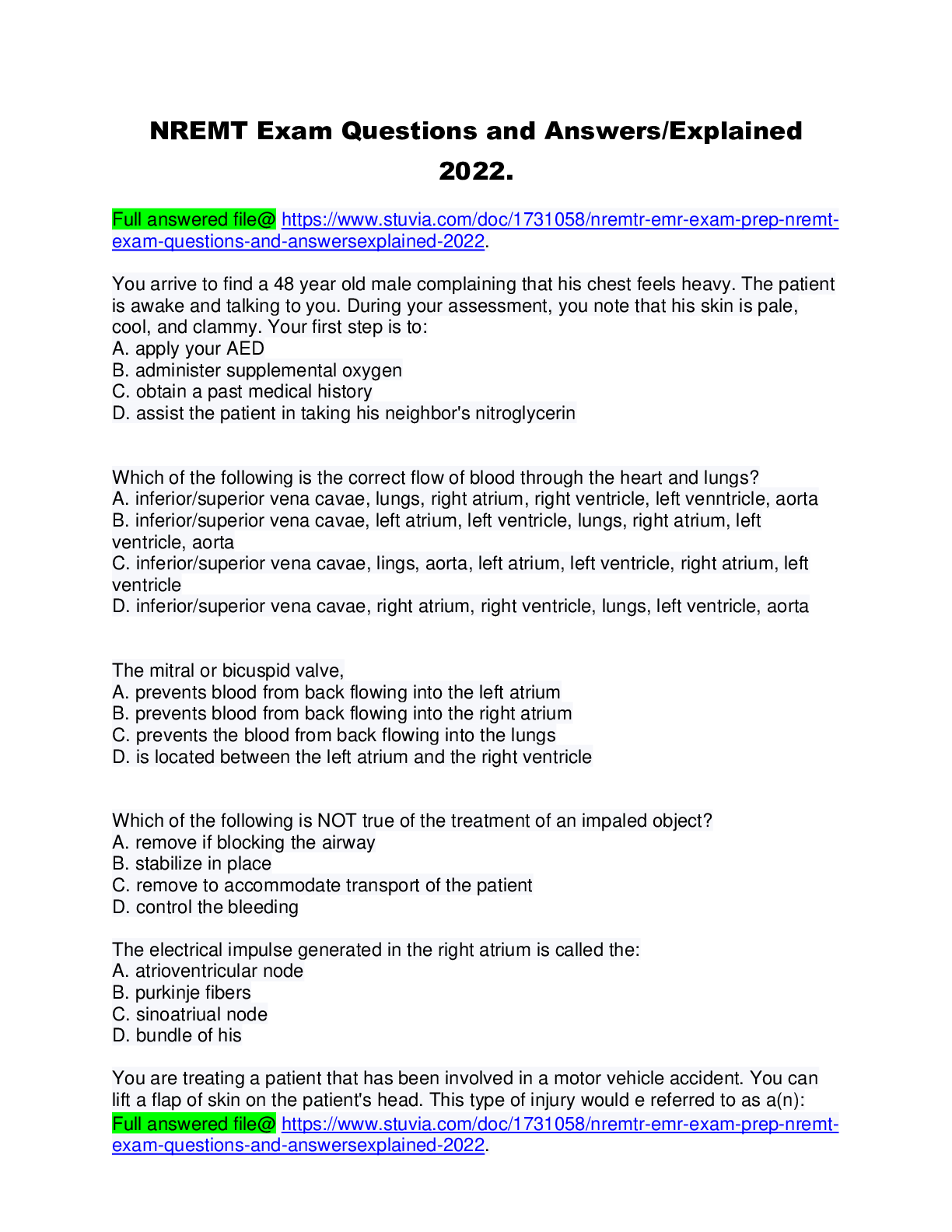
NREMT EXAM BUNDLE. QUESTIONS WITH ACCURATE ANSWERS, LATEST UPDDATES
COMPRISES OF ALL EXAMINABLE NREMT EXAM QUESTIONS WITH ACCURATE ANSWERS.
By bundleHub Solution guider 1 year ago
$32
25
Reviews( 0 )
Document information
Connected school, study & course
About the document
Uploaded On
Aug 12, 2022
Number of pages
41
Written in
Additional information
This document has been written for:
Uploaded
Aug 12, 2022
Downloads
0
Views
144





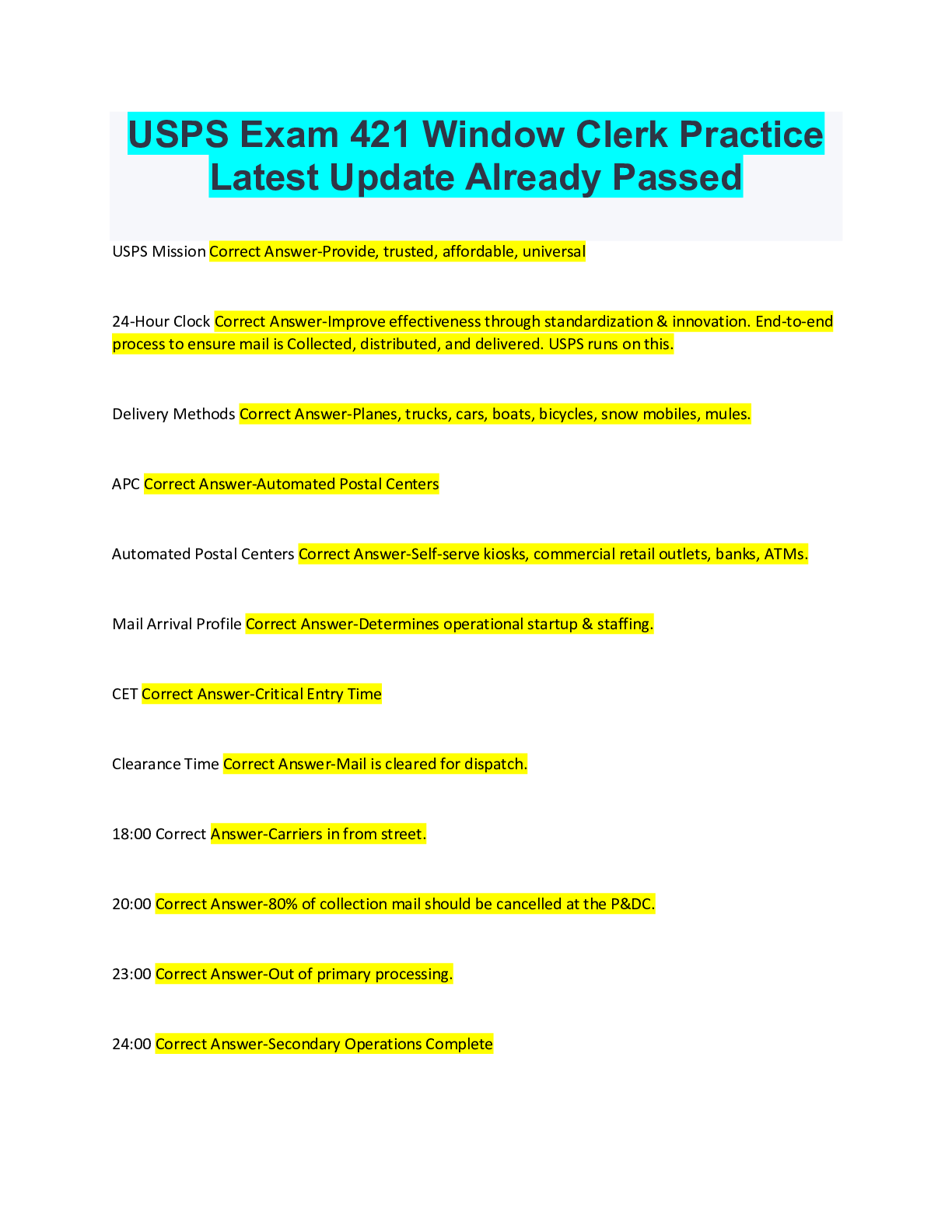

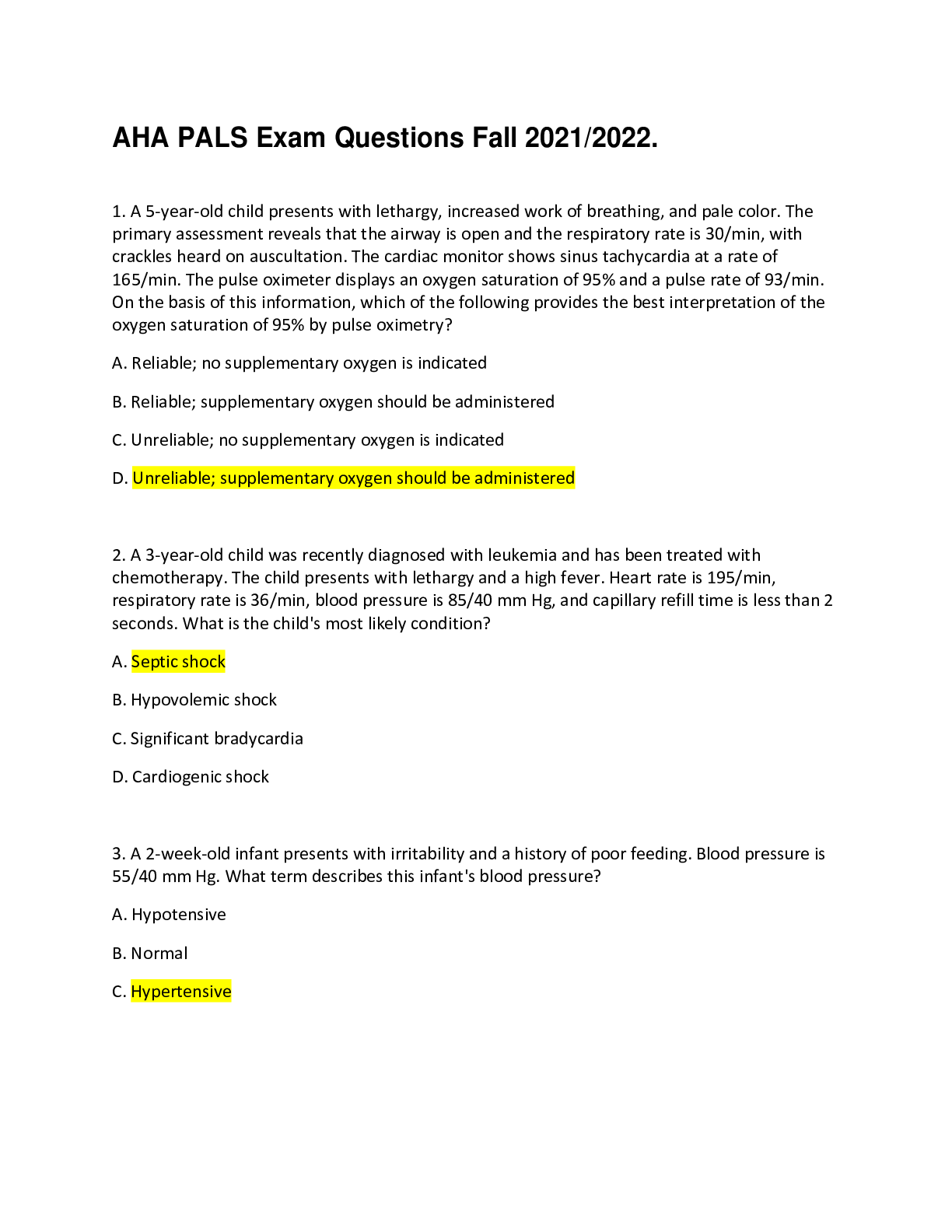


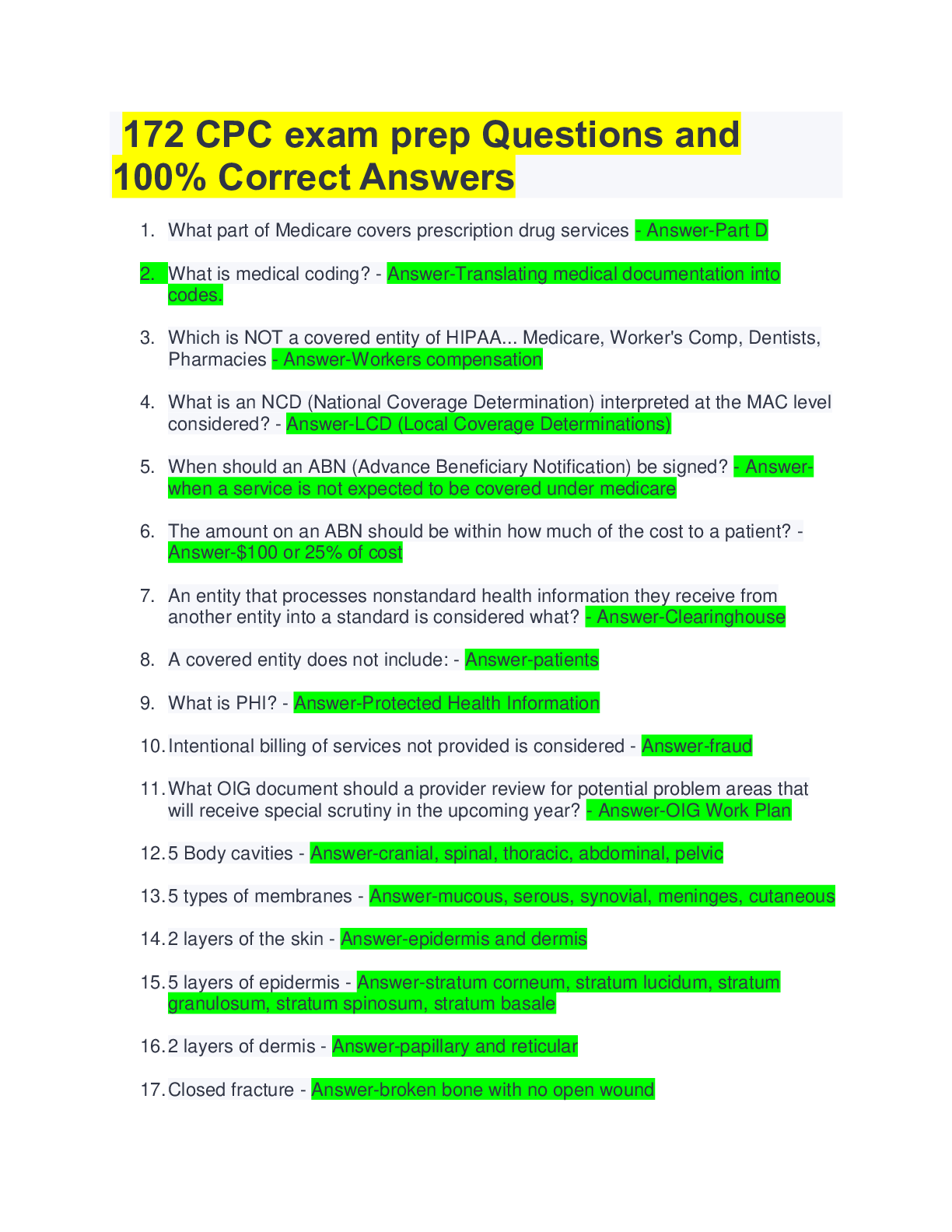
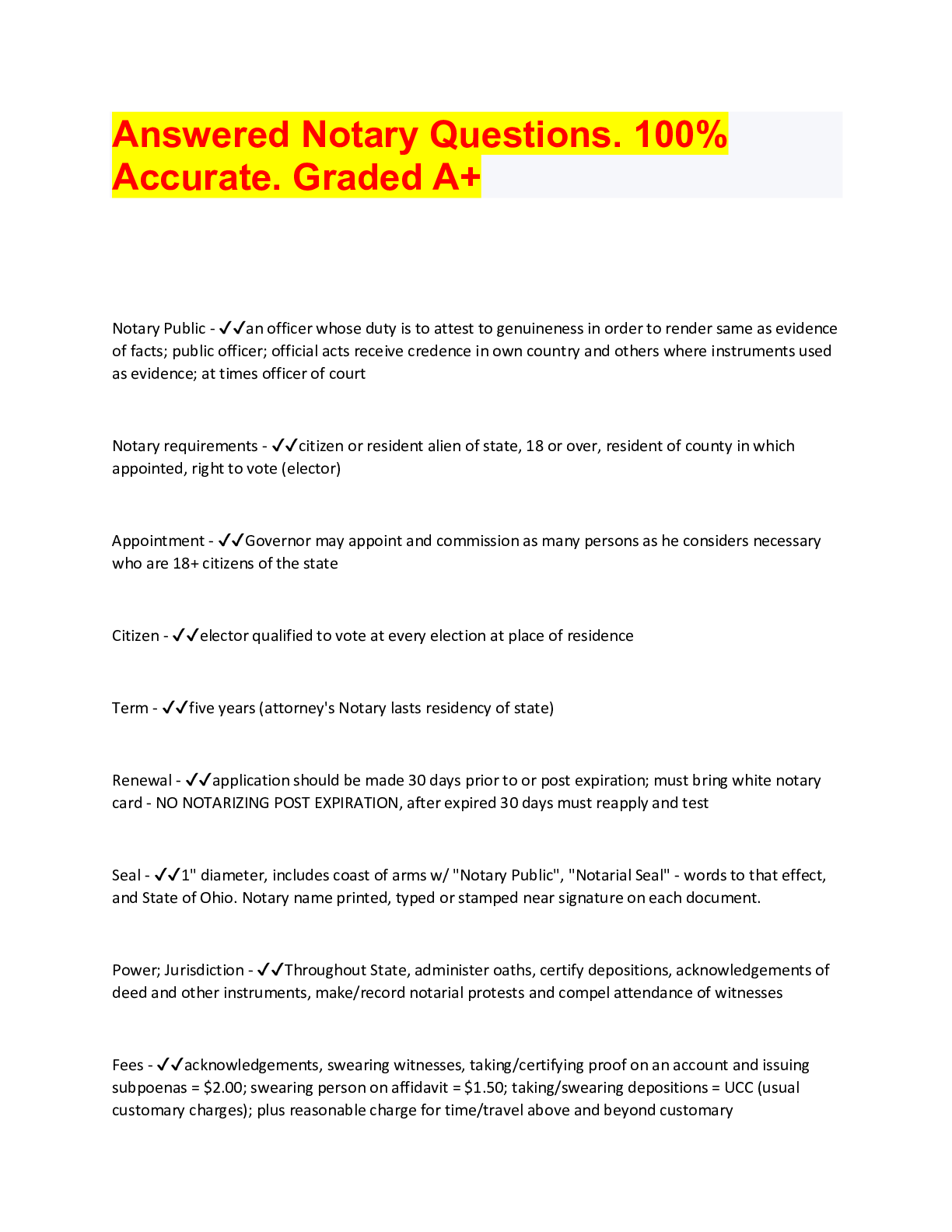

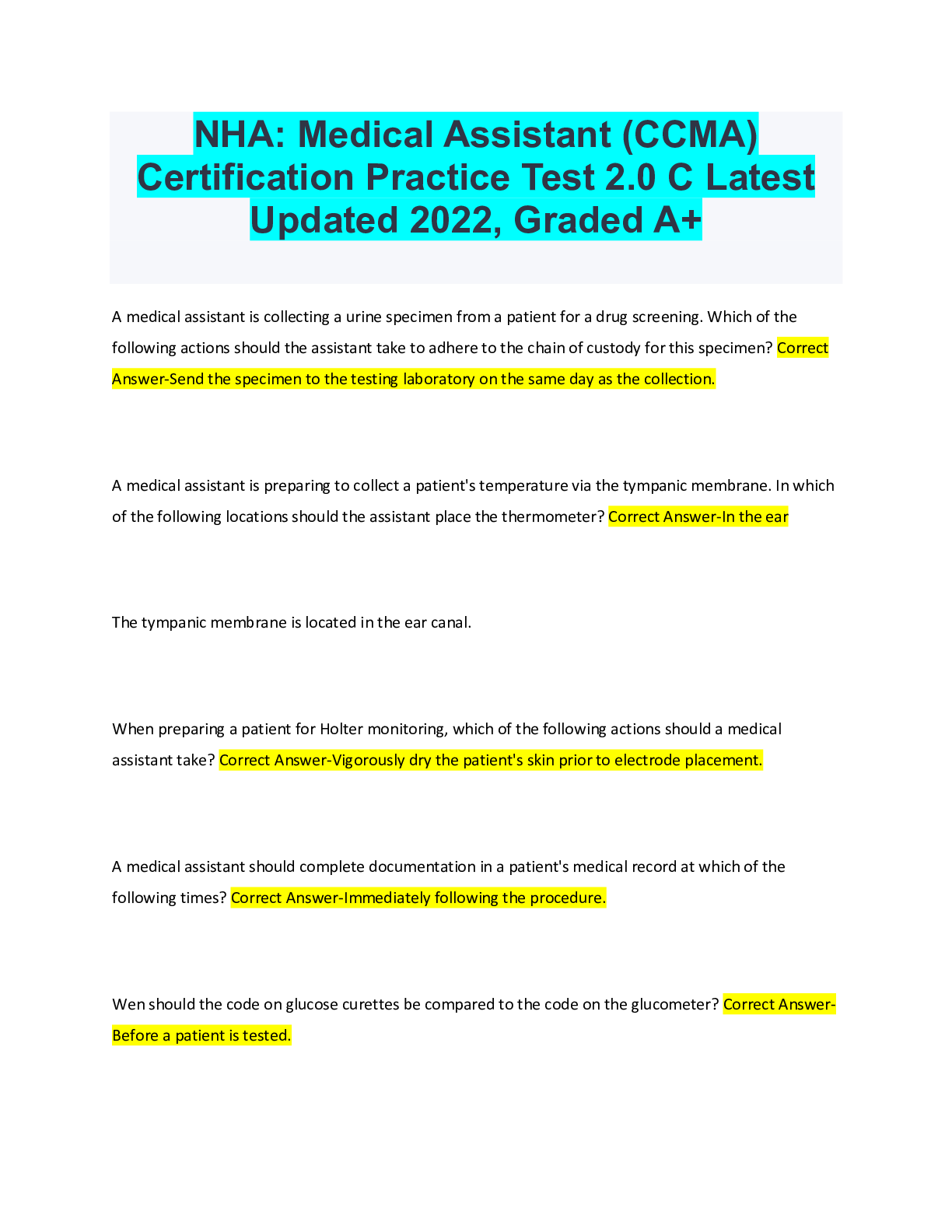
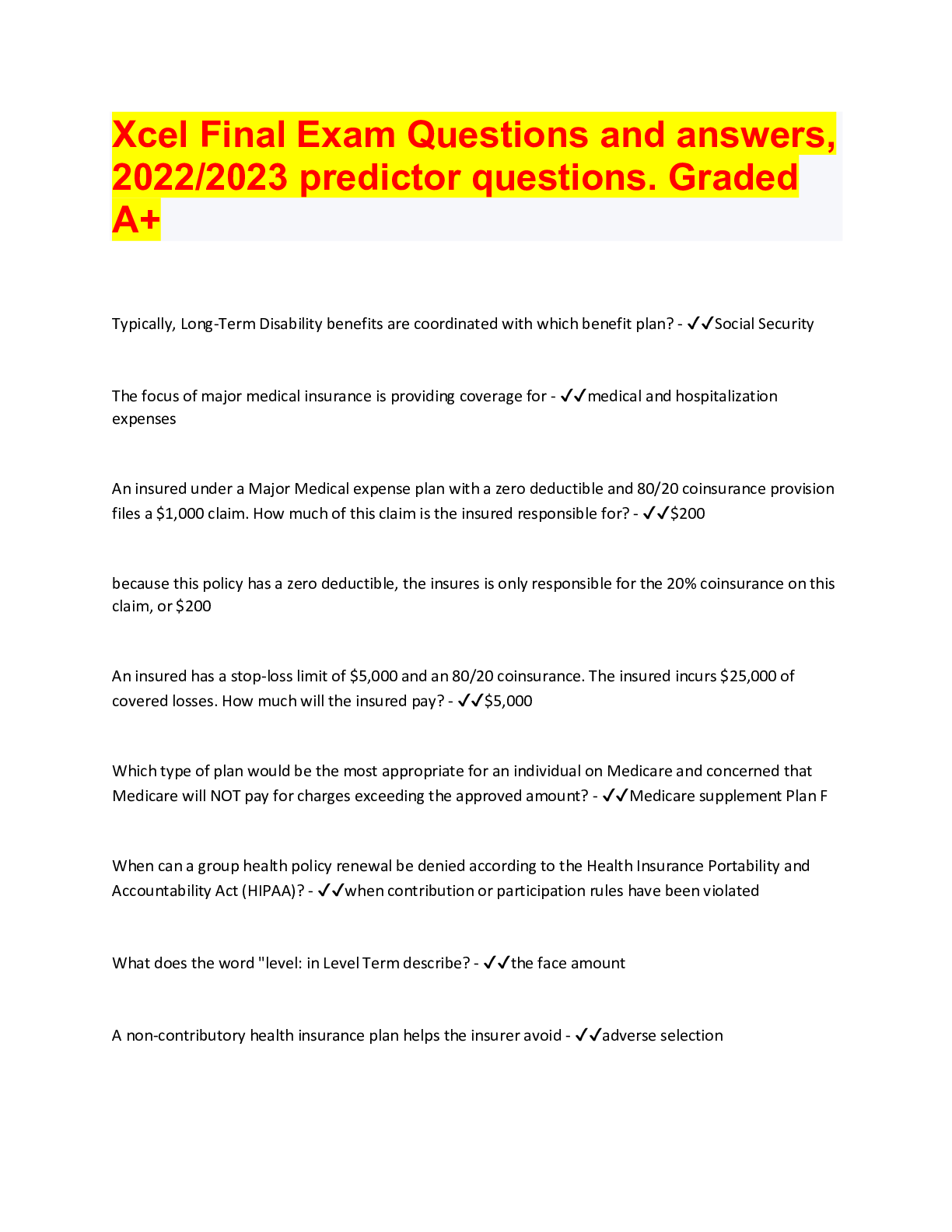

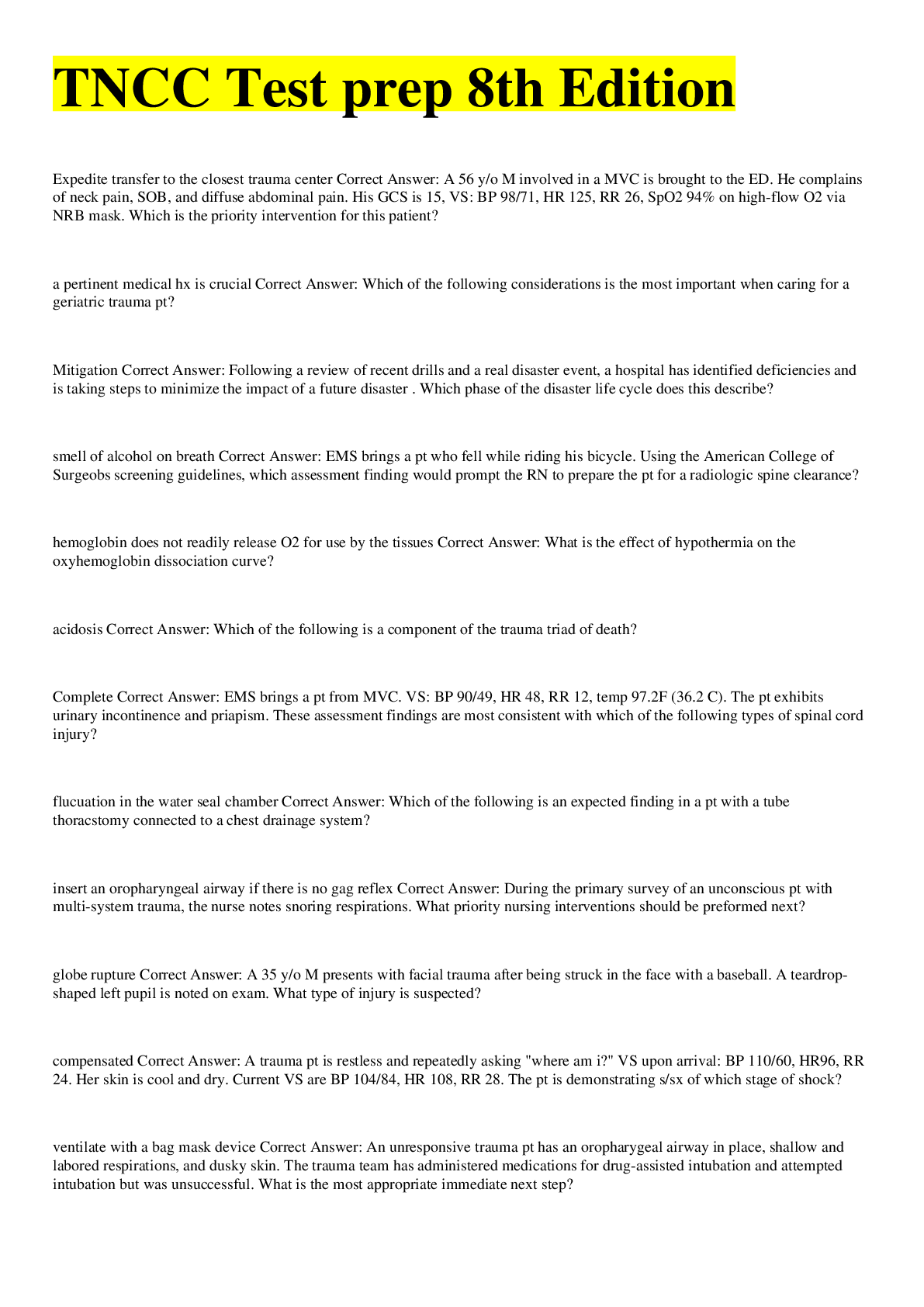
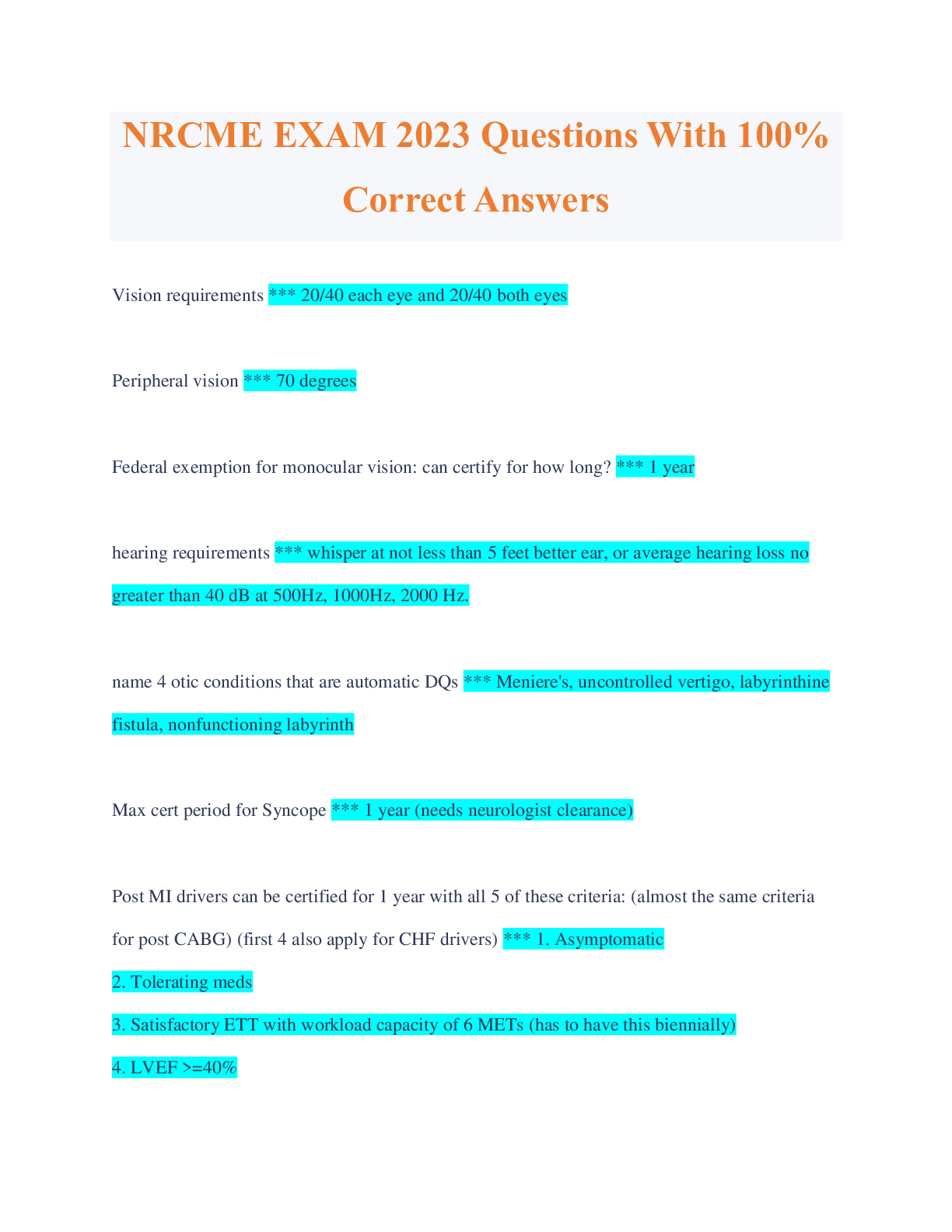

.png)
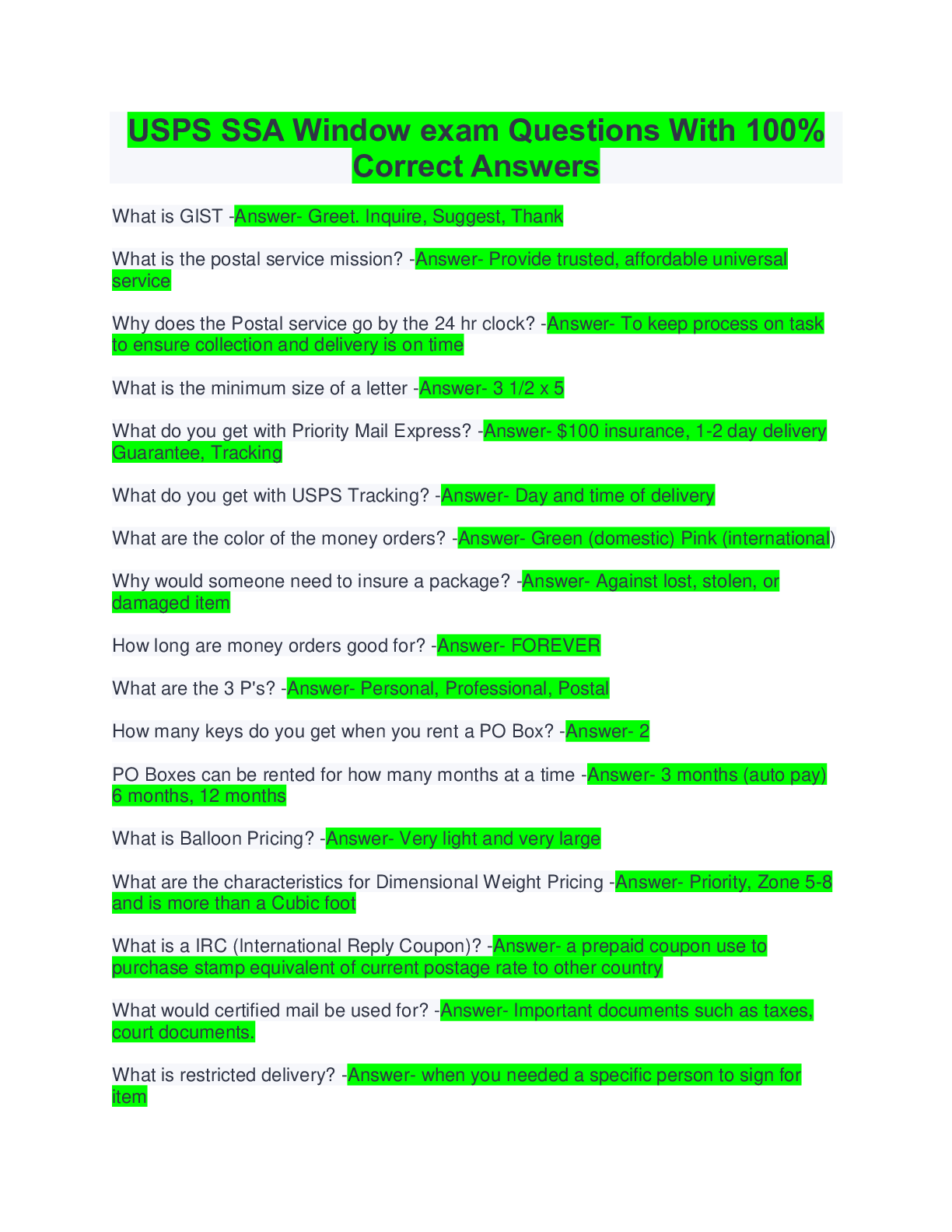
.png)
.png)
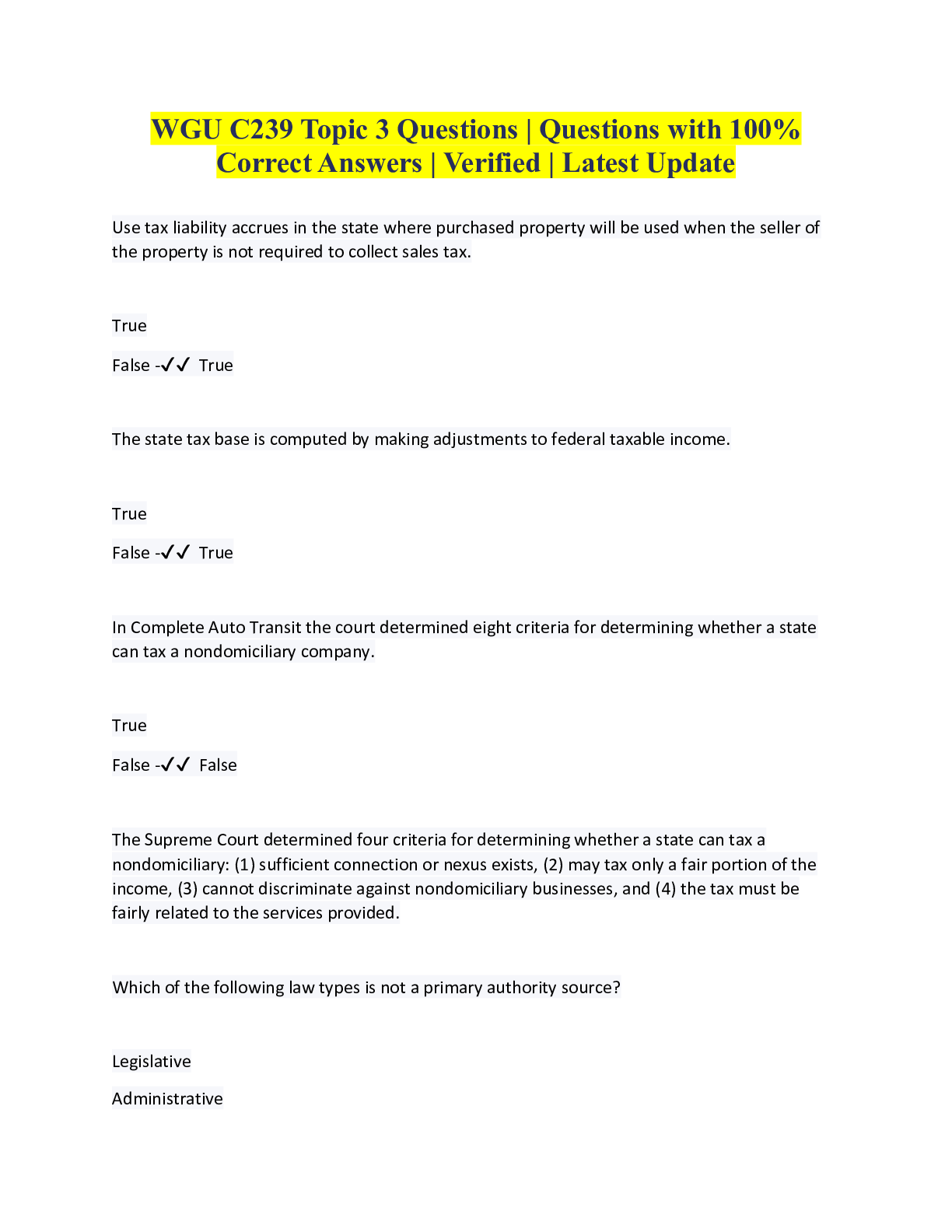


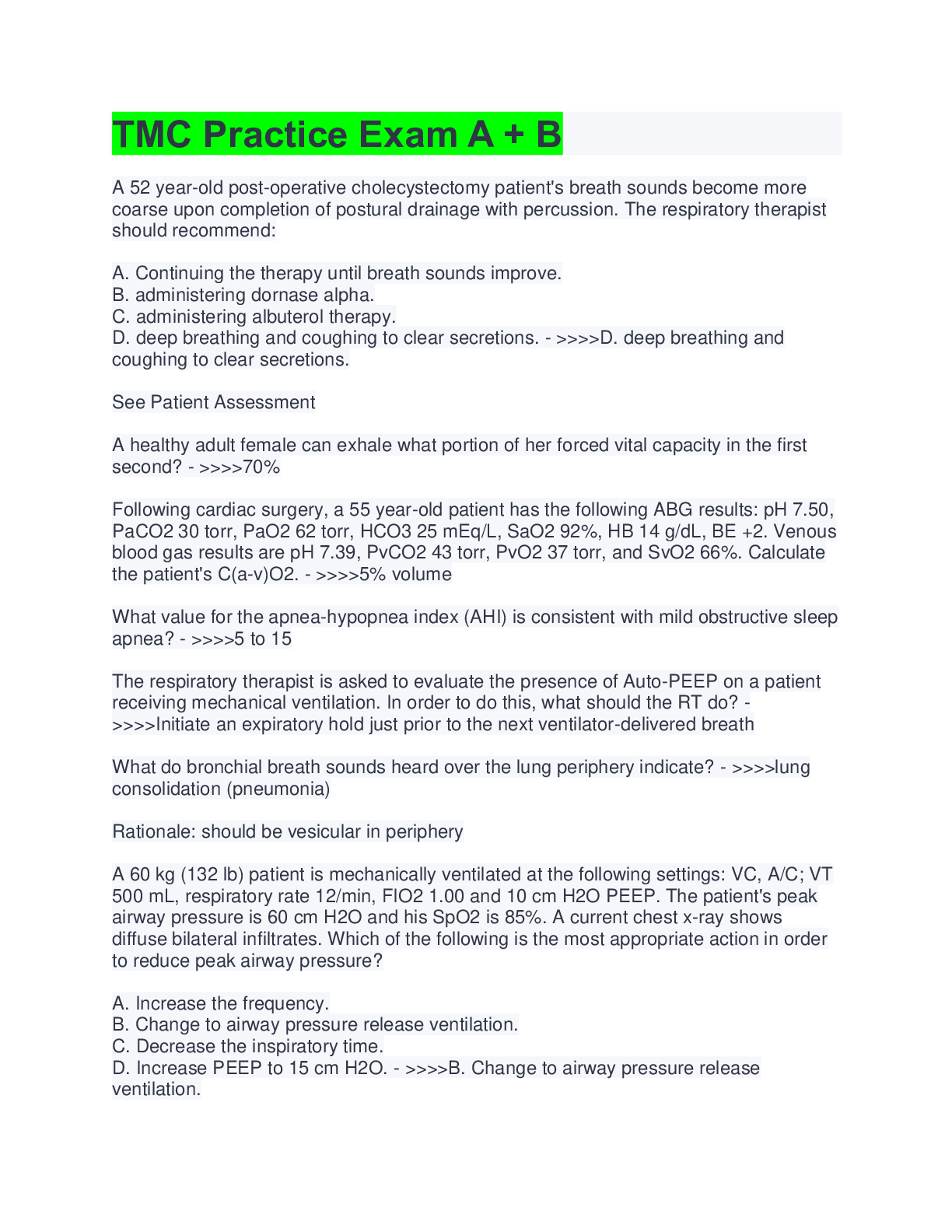
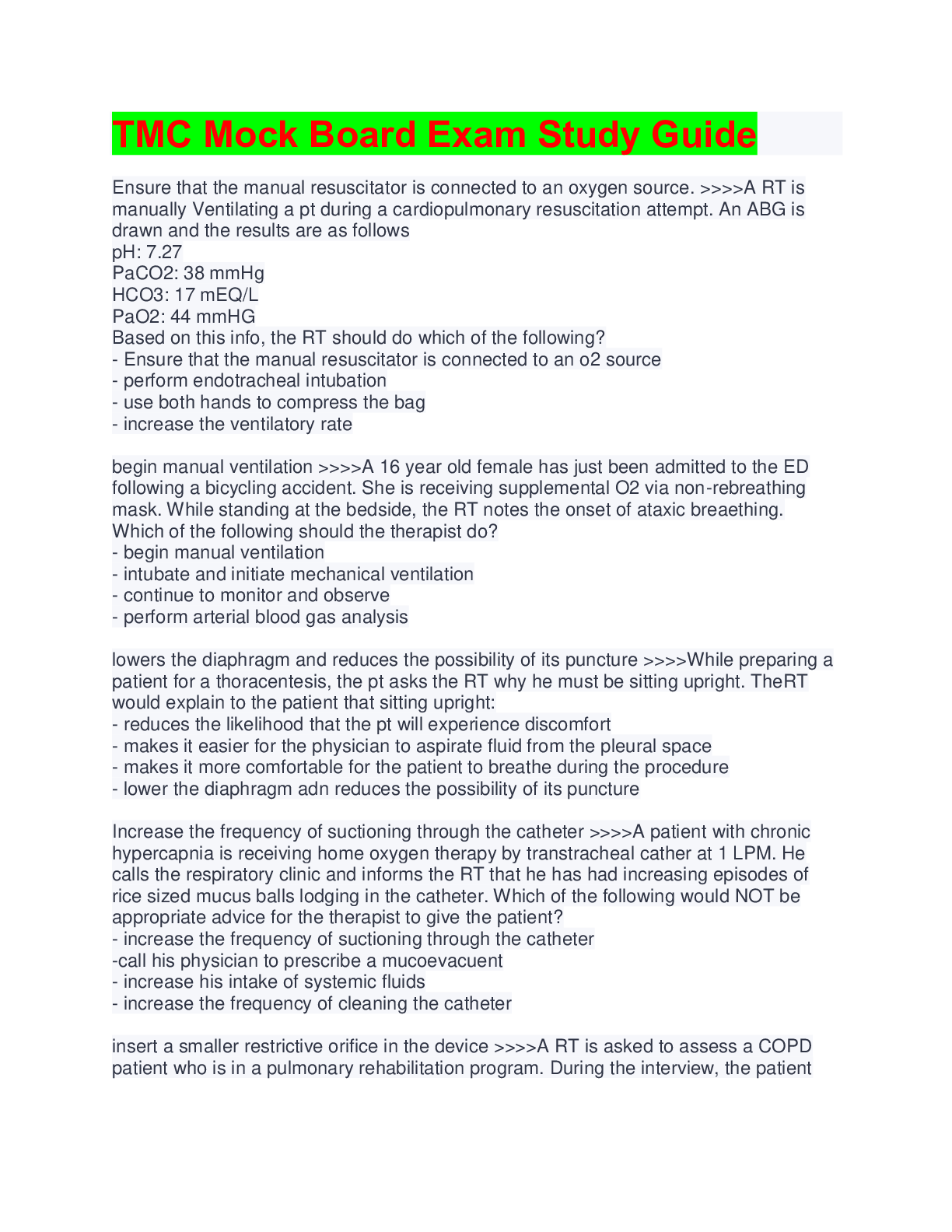
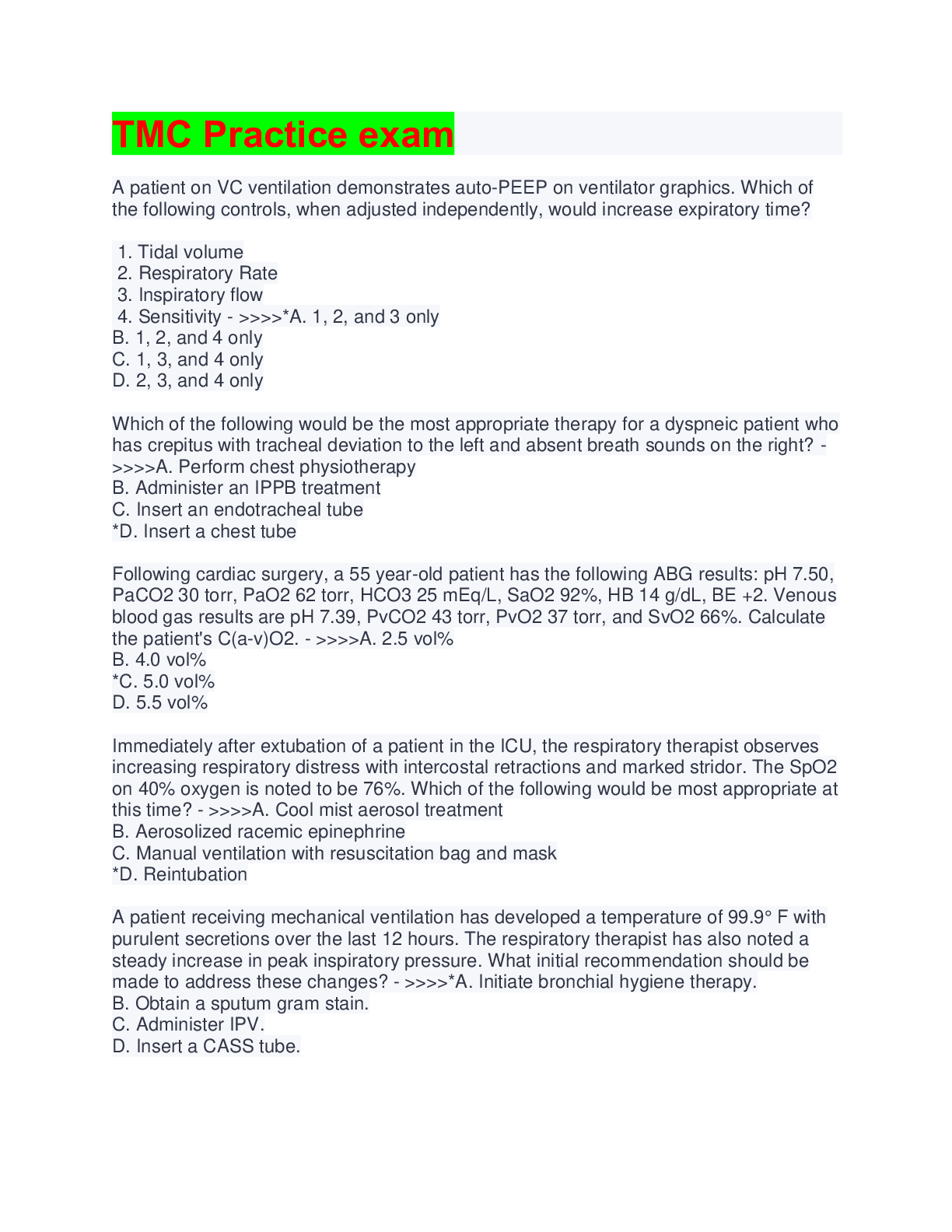
.png)
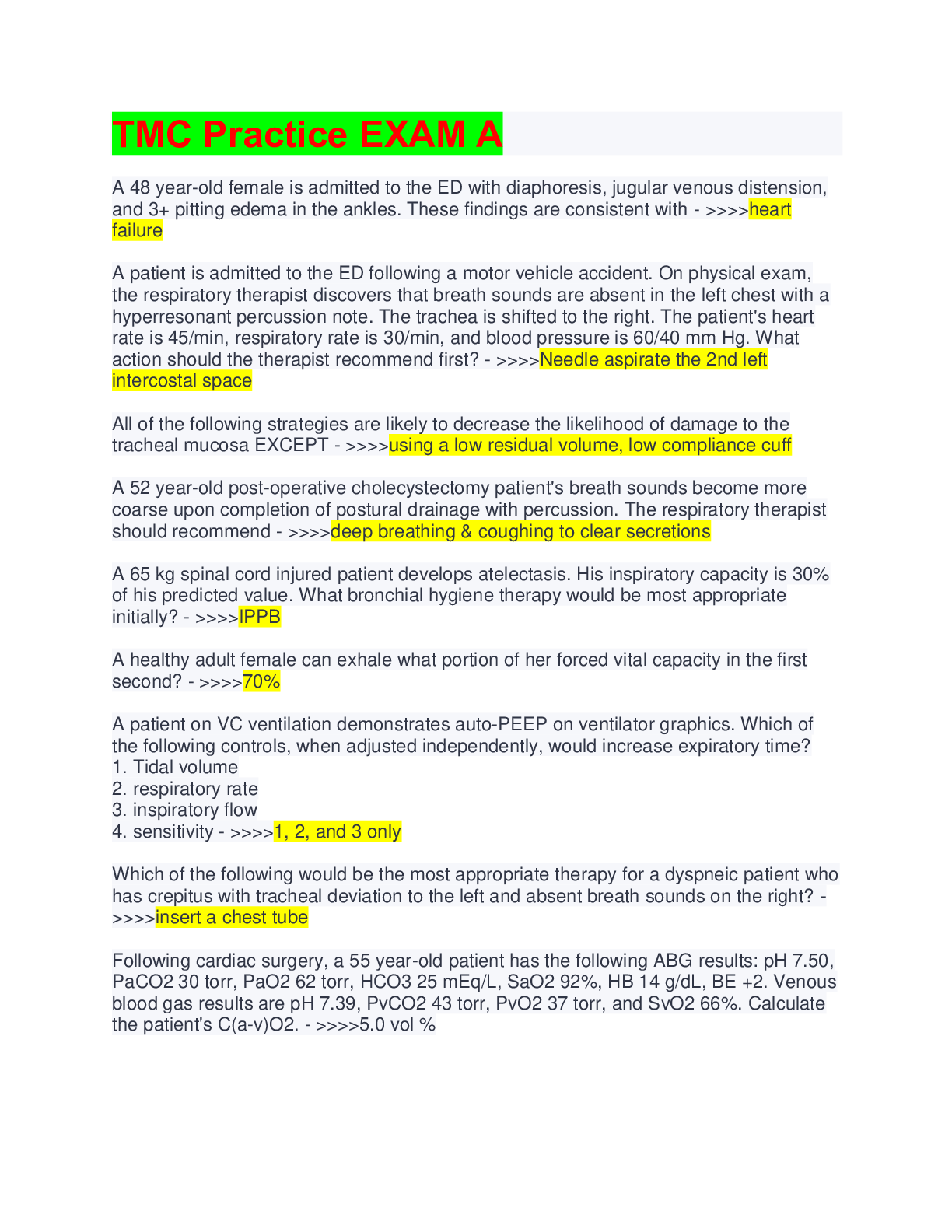
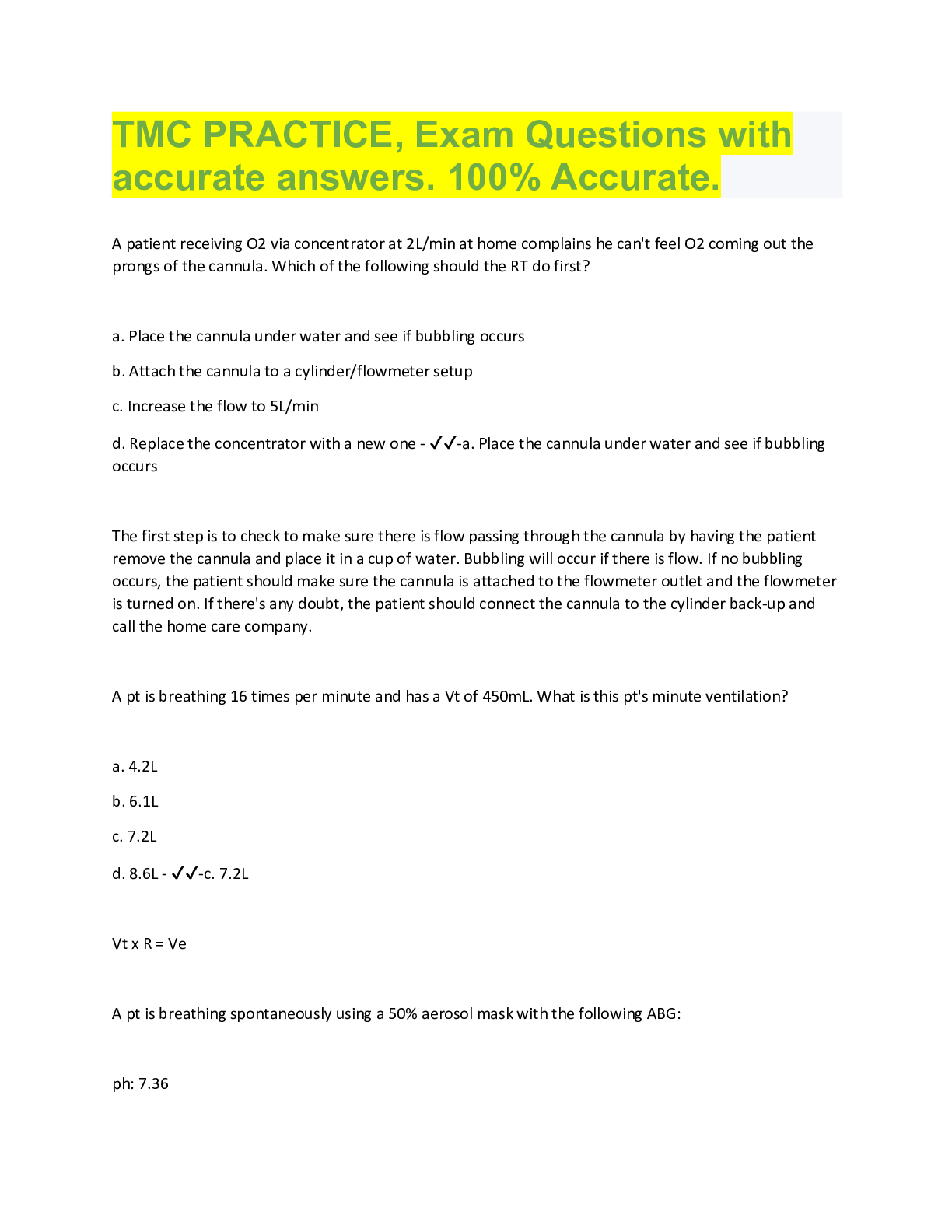
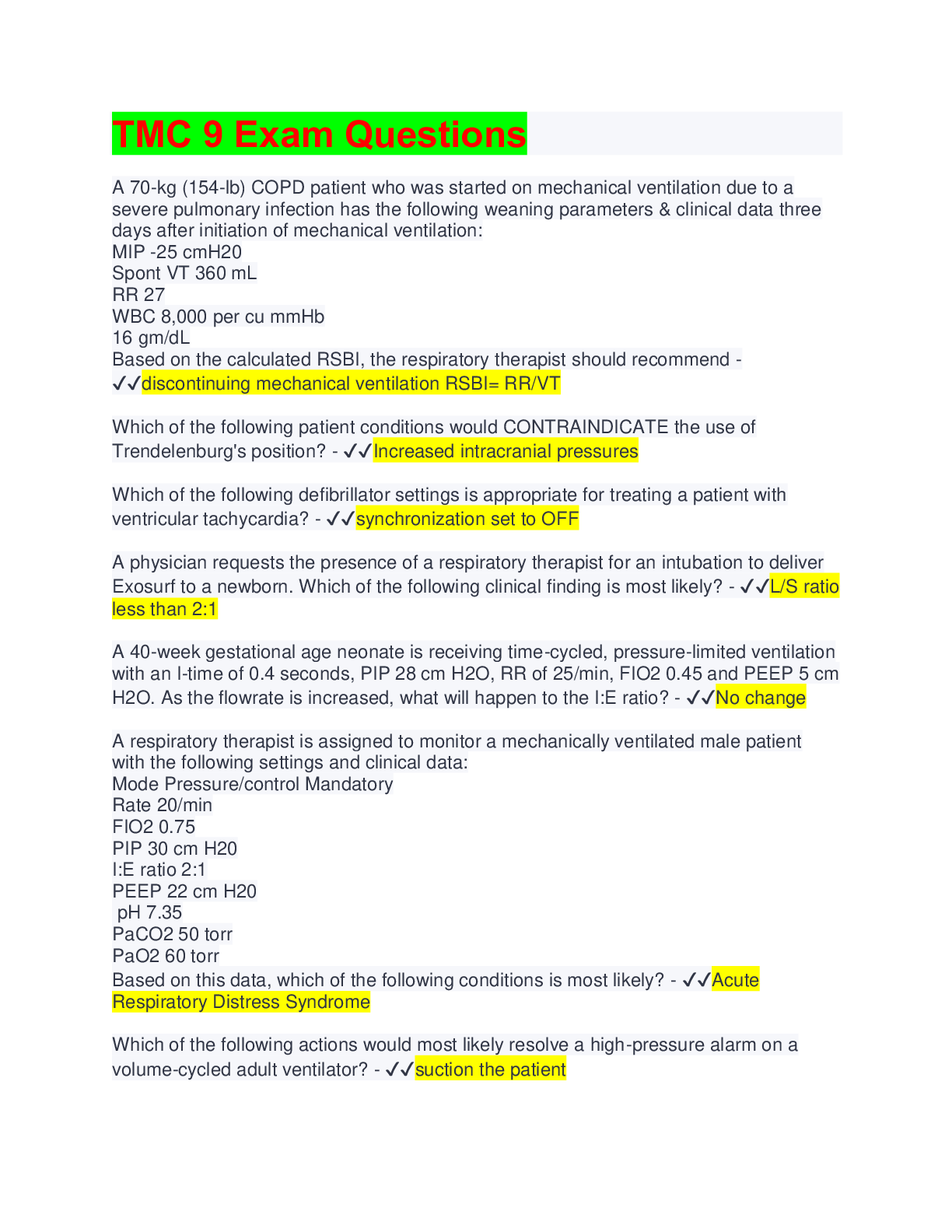
.png)

